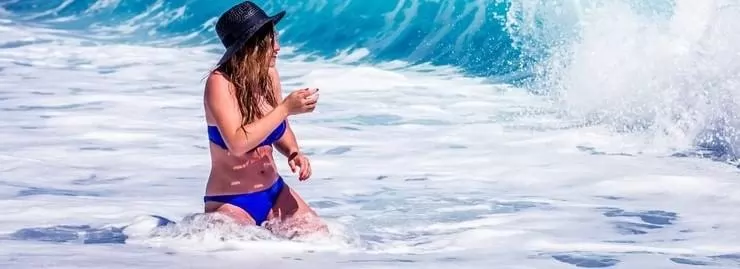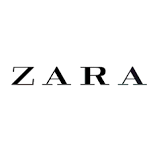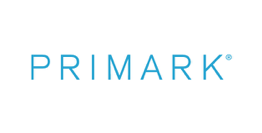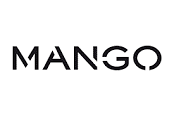Summary
Since 2020, the global swimwear market has continued its robust growth with women's swimwear making up 75% of the total market value. This growth aligns with the increasing disposable income of consumers, alongside a heightened awareness of environmental sustainability, which is driving demand for eco-friendly swimwear options. Despite this upward trend, there is a noted decrease in overall clothing expenditure, potentially influenced by consumer awareness of fast fashion's environmental impact.
The internet has emerged as a burgeoning channel for swimwear purchases, with younger demographics leading the charge in online shopping. The Spanish market has exhibited modest growth, with a slight annual increase in revenue post-2015. Asia remains the leading source for Spain's swimwear imports, largely due to cost competitiveness, while over 85% of Spain's exports go to European neighbors. Meanwhile, the market is relatively fragmented, with major players like Inditex dominating with a 20% market share. The swimwear market continues to diversify with a range of products catering to different customers' needs, including technical swimsuits for sports and trendy bikinis for leisure, while prices can vary widely based on brand positioning, from luxury to entry-level. Regulations regarding textile labeling and sustainable waste management remain stringent, ensuring industry compliance and consumer safety.
Swimsuit Market Dynamics in Spain: Trends and Consumption Patterns
The swimsuit market in Spain, part of the larger swimwear category, has seen nuanced consumption patterns in recent years. Swimsuits are not just attire for water activities but have become a fashion statement, with various styles like trikinis, swim briefs, tankinis, and bikinis available to consumers. The market is broadly classified into "technical" swimsuits, designed for athletes and swimmers, and "leisure" swimsuits which are more fashion-oriented for sea swimming and beach outings. Women are the primary consumers of swimwear, commanding roughly three-quarters of the global market. Recent trends in the Spanish swimsuit market include a growing interest in eco-friendly production methods and fabrics, alongside technical innovations like UV protection, quick-drying features, and stretch fabrics.
In Spain, the market has been increasing steadily, albeit at a slow pace, since the mid-2010s. The Spanish market alone for swimwear was valued at nearly one billion euros, with the swimsuit segment estimated at over 200 million euros. Yet, Spain faces a trade deficit, mainly importing swimwear, with Asia leading as an import hub due to cost competitiveness. Swimwear in Spain has been predominantly women-focused, constituting approximately 75% of the market. The men's segment, though smaller, has been witnessing a positive sales trend.
Interestingly, tourism has played a significant role in bolstering the swimsuit market, as Spain's coastal and island destinations remain high on the list of tourist hotspots, potentially boosting local swimsuit sales. The average disposable income in Spain has been climbing yearly since the early 2010s, allowing for increased spending capacity. However, fashion spending took a slight hit in recent years, attributed to various factors, including climatic shifts and rising consciousness about the environmental impact of fashion consumption. This has led some consumers to prioritize quality and local production over quantity. Spain's production landscape for swimwear is quite diverse, with brands like allSisters leveraging environmental concerns by using eco-friendly, recycled materials. In terms of distribution channels.
The Titans of the Swimwear Arena
An Exploration of Market Leaders The swimwear market is a dynamic and multifaceted industry that has gained momentum over the years, embracing both technical prowess and fashion sensibilities. This sector is characterized by a range of key players, each contributing to the market's vibrancy with their unique offerings and strategic approach. In this exploration, we'll dive into the profiles of the prominent companies shaping the swimwear narrative.
- Calvin Klein holds a position at the luxury end of the spectrum. Known for its sleek designs and signature aesthetics, Calvin Klein offers a range of high-end swimwear products that span from classic elegance to contemporary chic. The brand's grasp on the luxury market is evident in its persistent appeal and reputation for quality.
- Inditex, the powerhouse behind popular brands like Zara and Oysho, dominates the mid-range segment. They bring fashion-forward swimwear to the masses, with Inditex's omnipresence strongly felt across global markets. Their ability to quickly adapt to market trends and churn out stylish swimwear continuously keeps them at the forefront of the industry.
- Women'secret is a distinct player in the swimwear landscape, focusing on creating pieces that highlight femininity and comfort. Their designs cater to a wide demographic, ensuring a personalized appeal and maintaining a significant presence in the market.
- Mango competes effectively in the mid-range sector, providing a mix of fashion-oriented and functional swimwear. Their global footprint and commitment to contemporary design have solidified their status as a notable name in the swimwear conversation.
- Primark offers an accessible option for budget-conscious consumers. The brand is known for delivering trendy swimwear at highly competitive prices. Primark's ability to maintain low cost without compromising style has earned them a loyal customer base.
- Calzedonia adds to the mid-range segment with its vast selection of swimwear that caters to different tastes and body types. Their offerings blend quality with affordability, positioning them as a go-to for many shoppers seeking both practicality and fashion in their swimwear. In the realm of sports brands.
- Boardriders, with brands like Quiksilver, Billabong, and Roxy in its portfolio, brings a surf and adventure lifestyle into the mix. Their swimwear often reflects the laid-back, free-s
to understand this market
Detailed content
 Inforamtion
Inforamtion
- Number of pages : 30 pages
- Format : Digital and PDF versions
- Last update : 21/11/2021
 Summary and extracts
Summary and extracts
1 Market overview
1.1 Definition and presentation
As trendy as the latest pair of sneakers, the swimsuit has become a piece of clothing as well as a trend object in its own right in recent years. Trikini, swim briefs, swim shorts, tankini, monokini and bikini are the différentes variations that customers can find.
The swimsuit belongs to the broader category of swimwear. We will try to deal mainly with the swimwear market
The swimwear market can be divided into two main categories:
- The "technical" swimsuits used by swimmers in the pool or sportsmen and women;
- The "leisure" type swimsuits which are trendy and summery swimsuits for swimming in the sea and for the beach.
Men and women consume swimwear differently, with 75% of the world market being female [Kantar Worldpanel].
The latest trends in the Spanish market are anti-UV bathing suits, quick-drying swimsuits and stretch fabric swimsuits. There are also ecological trends in the consumption of swimwear.
 List of charts
List of charts
- Marché du maillot de bain en valeur
- Evolution de la taille du marché mondial des articles de bain en valeur et prévisions*
- Evolution du nombre d'articles de bain vendus dans le monde et prévisions*
- Taille du marché du swimwear
- Principaux fournisseurs de maillots de bain
All our studies are available online in PDF format
Take a look at an example of our research on another market!
Latest news
Companies quoted in this study
This study contains a complete overview of the companies in the market, with the latest figures and news for each company. :
 Choosing this study means :
Choosing this study means :
Access to more than 35 hours of work
Our studies are the result of over 35 hours of research and analysis. Using our studies allows you to devote more time and added value to your projects.
Benefit from 6 years' experience and over 1,500 industry reports already produced
Our expertise enables us to produce comprehensive studies in all sectors, including niche and emerging markets.
Our know-how and methodology enable us to produce reports that offer unique value for money.
Access to several thousand articles and paid-for data
Businesscoot has access to all the paid economic press as well as exclusive databases to carry out its market research (over 30,000 articles and private sources).
To enhance our research, our analysts also use web indicators (semrush, trends, etc.) to identify market trends and company strategies. (Consult our paying sources)
Guaranteed support after your purchase
A team dedicated to after-sales service, to guarantee you a high level of satisfaction. +44 238 097 0676
A digital format designed for our users
Not only do you have access to a PDF, but also to a digital version designed for our customers. This version gives you access to sources, data in Excel format and graphics. The content of the study can therefore be easily retrieved and adapted for your specific needs.
 Our offers :
Our offers :
the swimwear market | Spain
- What are the figures on the size and growth of the market?
- What is driving the growth of the market and its evolution?
- What is the positioning of companies in the value chain?
- Data from several dozen databases
5 reports pack (-15%) ES Spain
- 5 reports at €75.6 excluding VAT per study to choose from our Spanish catalogue for 12 months
- Save 15% on additional studies purchased
- Choose to be refunded any unused credit at the end of the 12-month period (duration of the pack)
See the terms and conditions of the pack and the refund of unused credit.






 Oniverse (formerly Calzedonia), revenues at 3.1 billion, strong push on foreign retail - 29/02/2024
Oniverse (formerly Calzedonia), revenues at 3.1 billion, strong push on foreign retail - 29/02/2024
 Zalando's challenges for growth on the European scene - 12/10/2023
Zalando's challenges for growth on the European scene - 12/10/2023
 Five things you need to know about Inditex, the owner of Zara stores - 17/09/2023
Five things you need to know about Inditex, the owner of Zara stores - 17/09/2023

















